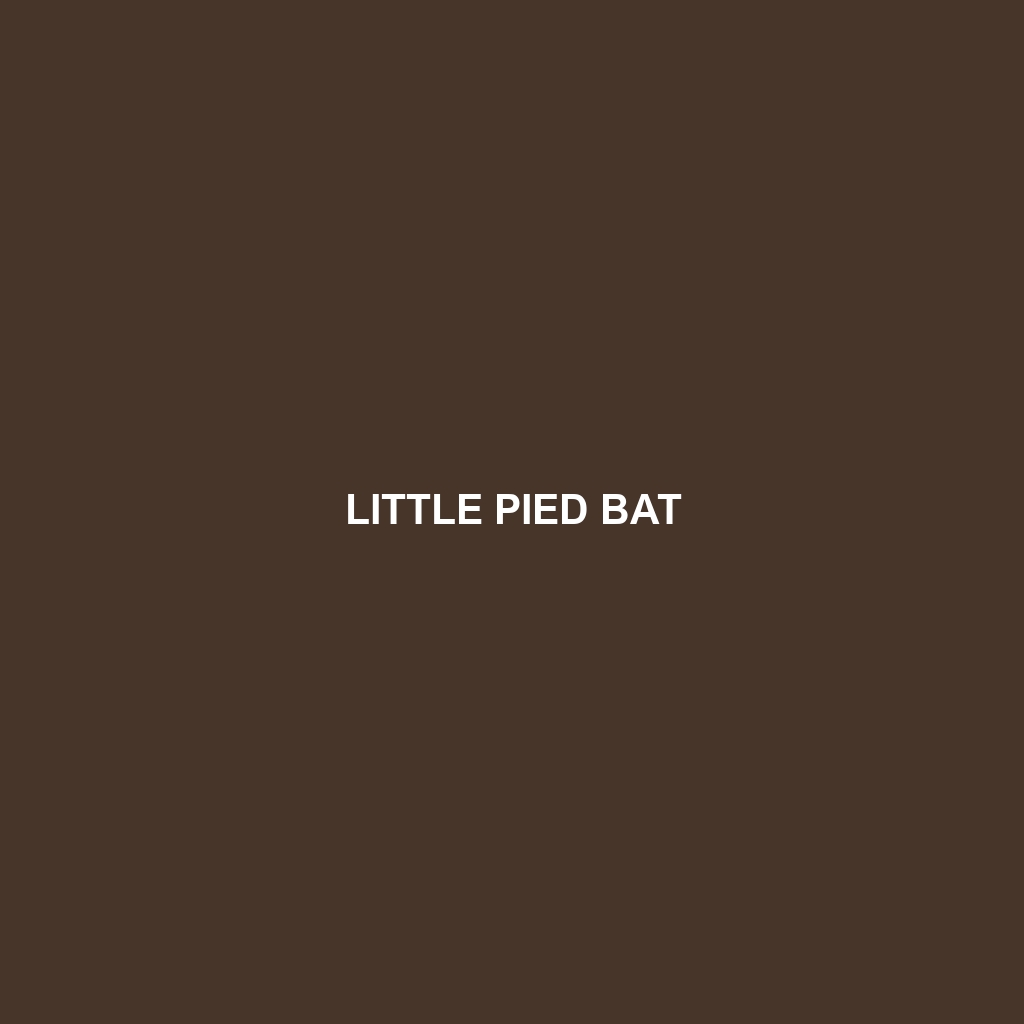Little Pied Bat: A Comprehensive Overview
Common Name: Little Pied Bat
Scientific Name: Chalinolobus picatus
Habitat
The Little Pied Bat, primarily found in southeastern Australia, occupies a diverse range of habitats including temperate forests, woodlands, and urban areas. This species shows a preference for environments near water sources like rivers and lakes, where it typically roosts in tree hollows and human-made structures. Its adaptability to different ecological zones contributes to its distribution across Australia, particularly in Queensland, New South Wales, and Victoria.
Physical Characteristics
The Little Pied Bat is a small bat species, measuring approximately 10-12 cm in body length with a wingspan of about 25-30 cm. Its fur is generally soft and short, exhibiting a striking black and white coloration that distinguishes it from other bat species. The bat’s most distinctive feature is its pale cream to buff-coloured belly and face, contrasting sharply with its dark-colored back. This coloration not only helps it camouflage in its habitat but is also an attractive aspect for wildlife enthusiasts.
Behavior
Known for its agile flying capabilities and swift movements, the Little Pied Bat is primarily nocturnal, emerging at dusk to forage. It employs echolocation for navigation and hunting, enabling it to capture insects mid-flight. Socially, it can be found roosting in small groups, often consisting of individuals of the same species, which enhances its survival through communal warmth.
Diet
The diet of the Little Pied Bat primarily consists of aerial insects, including moths, beetles, and flies. It is adept at hunting in open areas, where it can catch its prey by swooping down in quick, agile motions. This insectivorous diet plays a crucial role in controlling insect populations within its ecosystem.
Reproduction
Little Pied Bats exhibit a defined breeding season occurring in late spring to early summer. Females typically give birth to one or two offspring after a gestation period of approximately 3-4 weeks. The young bats cling to their mothers for warmth and nourishment, gradually becoming independent as they learn to fly and forage.
Conservation Status
The current conservation status of the Little Pied Bat is classified as “Least Concern” by the International Union for Conservation of Nature (IUCN), indicating a stable population. However, like many bat species, it faces threats from habitat destruction, climate change, and pesticide use, which could impact its future well-being.
Interesting Facts
One unique aspect of the Little Pied Bat is its remarkable adaptability. It can thrive in both natural and urban environments, making it a fascinating species to observe. Additionally, its echolocation abilities are so advanced that it can detect prey in complete darkness, showcasing nature’s incredible adaptations.
Role in Ecosystem
The Little Pied Bat plays a vital role in maintaining ecological balance as an effective insect predator. By consuming large quantities of insects, it helps reduce pest populations, which is beneficial for agriculture and human habitation. Moreover, its presence indicates a healthy ecosystem, making it essential for biodiversity.
